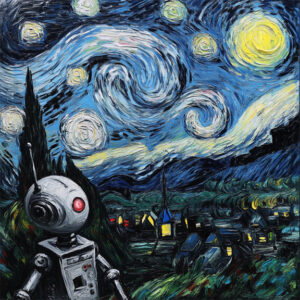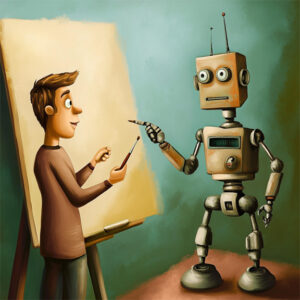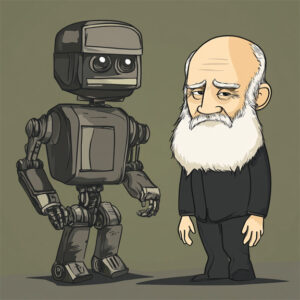 Mass shootings occur with such frequency that there is a well-established script for everyone. The media focuses on the weapon used, the right offers “thoughts and prayers” and says now is not the time to talk about gun violence, and the left calls for more gun control. Attention will then fade; children will be buried and nothing significant will be done. This cycle will repeat with the next mass shooting. And the next. As a country, we are getting it wrong in many ways.
Mass shootings occur with such frequency that there is a well-established script for everyone. The media focuses on the weapon used, the right offers “thoughts and prayers” and says now is not the time to talk about gun violence, and the left calls for more gun control. Attention will then fade; children will be buried and nothing significant will be done. This cycle will repeat with the next mass shooting. And the next. As a country, we are getting it wrong in many ways.
One way we get it wrong, which is a fault of the media and “the left”, is to obsess on the weapon used in the shooting. This weapon is often an AR-15. The media script often involves asking why it is used in shootings. The easy and obvious answer is that it shows up at mass shootings for the same reason that McDonald bags end up on the roadside: both are very popular. The AR-15 is a “good” weapon for mass shootings because it has a large magazine capacity and is both lethal and easy to shoot. But the AR-15 is not unique. There are similar assault rifles (as they are called). For example, the AK-47 and its clones are effective weapons of this type; but they are less popular in America. Other guns are just as lethal (or more so) than the assault rifles, but they usually have smaller magazines. For example, a hunting rifle might hold only 5 rounds. This shows one of the problems with the obsession with the AR-15, that there are other weapons that can do the same.
Another problem with obsessing about the specific weapon is that it enables an easy red herring response to calls for gun control. A red herring is a rhetorical device used to divert attention from the original issue to another issue. When, for example, a reporter starts pressing a congressman about the AR-15, they can easily switch the discussion from gun violence to a discussion about the AR-15, thus getting away from the real issue. A solution is to resist focusing on one weapon and focus instead on the issue of gun violence. Which leads to another way we get it wrong.
School shootings are horrific, but they are not the way most victims of gun violence die. Homicides are currently at relatively low levels (for the United States). Most gun-related deaths are suicides, and assault rifles are not the most used weapon in gun deaths. School shootings and mass shootings get the attention of the media and the nation, but this has seemed to enable us to ignore the steady flow of gun-related deaths that do not make headlines. This is not to deny mass shooting are serious problem. But the gun violence problem in America goes beyond mass shootings. It is, ironically, a quiet problem that does not get the spotlight of the media like a mass shooting does. As such, even less is done about the broader problem than is done about mass shootings. And little or nothing is done about mass shootings.
While there are gun control proposals from “the left”, the right advocates having a “good guy with a gun” approach, blames mental illness, and propose fortifying schools. There seems to be little evidence that the “good guy with a gun” will solve the problem of mass shootings; but this is because there is so little good data about gun violence. While mental illness is clearly a problem and seriously addressing mental illness would be a social good, it seems unlikely that the vague proposals offered would do anything even if they were acted upon. America essentially abandoned the mentally ill during the Reagan era, an approach that has persisted to this day. The right is not serious about putting in the social services needed to address mental illness; they bring it up in response to mass shootings to distract people from gun control. The left, while expressing concern, also has done little to address this challenge or health care in general. Also, people with mental illnesses are more likely to be victims than perpetrators, so addressing mental health in a way that focuses on mass shooters would not address the broader problem.
The proposals to create “Fortress Academia” might seem appealing, but there is the obvious problem with cost: public schools are often chronically underfunded, and it is not clear where the money needed for such fortifications would come from. Turning schools into fortresses seems fundamentally wrong and is, perhaps, a red herring to distract people from the actual causes of the problem. To use an analogy, it is like addressing the opioid epidemic by telling people to get better home security to prevent addicts from breaking in to steal things to sell to buy drugs. This is not to say that school safety is a bad idea, just that turning our schools into forts does not seem to be the best approach.
I know that it will not be that long before I am writing about mass shootings and gun violence again as the malign neglect of the problem persists as does the neglect of so many of America’s ills.

 While analogies, like cars, always break down eventually, they can be useful. While running, I thought about my injury-induced lack of racing trophies and my oxygen deprived brain tied this into the division of goods in capitalism. Hence, this analogy between running races and capitalism.
While analogies, like cars, always break down eventually, they can be useful. While running, I thought about my injury-induced lack of racing trophies and my oxygen deprived brain tied this into the division of goods in capitalism. Hence, this analogy between running races and capitalism. Thanks to The Terminator, people think of a Skynet scenario as the likely AI apocalypse. The easy and obvious way to avoid a Skynet scenario is don’t arm the robots. Unfortunately, Anduril and OpenAI seem intent on “doing a Skynet” as
Thanks to The Terminator, people think of a Skynet scenario as the likely AI apocalypse. The easy and obvious way to avoid a Skynet scenario is don’t arm the robots. Unfortunately, Anduril and OpenAI seem intent on “doing a Skynet” as  As noted in my previous essay, a person does not surrender their moral rights or conscience when they enter a profession. It should not be simply assumed that a health care worker cannot refuse to treat a person because of the worker’s values. But it should also not be assumed that the values of a health care worker automatically grant them the right to refuse treatment based on the identity of the patient.
As noted in my previous essay, a person does not surrender their moral rights or conscience when they enter a profession. It should not be simply assumed that a health care worker cannot refuse to treat a person because of the worker’s values. But it should also not be assumed that the values of a health care worker automatically grant them the right to refuse treatment based on the identity of the patient. Joining a profession can complicate a person’s ethical situation. For example, lawyers are obligated to defend their clients even if their client is a moral monster. In the case of health care workers, moral complications can arise when they are expected to perform medical procedures they oppose on moral or religious grounds. They can also arise when they are asked to treat a patient when they have an objection to treating patients of that type, such as a transgender person or a CEO. There is the ethical issue of whether a health care worker has the right to refuse to perform a procedure or treat a patient based on these religious or moral objections.
Joining a profession can complicate a person’s ethical situation. For example, lawyers are obligated to defend their clients even if their client is a moral monster. In the case of health care workers, moral complications can arise when they are expected to perform medical procedures they oppose on moral or religious grounds. They can also arise when they are asked to treat a patient when they have an objection to treating patients of that type, such as a transgender person or a CEO. There is the ethical issue of whether a health care worker has the right to refuse to perform a procedure or treat a patient based on these religious or moral objections. AI generated works have already disrupted the realm of art. As noted in the previous essay, this is a big problem for content art (art whose value is derived from what it is or how it can be used). However, I will show that named art might enjoy some safety from AI incursions.
AI generated works have already disrupted the realm of art. As noted in the previous essay, this is a big problem for content art (art whose value is derived from what it is or how it can be used). However, I will show that named art might enjoy some safety from AI incursions. This essay changes the focus from defining art to the economics of art. This discussion requires making a broad and rough distinction between two classes of art and creators. The first class of art is called “named art.” This is art whose value derives predominantly from the name and fame of its creator. Works by Picasso, van Gogh, Rembrandt and the like fall into this category. Artists who are enjoying a fleeting fame also fall into this category, at least so long as their name is what matters. This is not to deny that such art can have great and wonderful qualities of its own; but the defining feature is the creator rather than the content.
This essay changes the focus from defining art to the economics of art. This discussion requires making a broad and rough distinction between two classes of art and creators. The first class of art is called “named art.” This is art whose value derives predominantly from the name and fame of its creator. Works by Picasso, van Gogh, Rembrandt and the like fall into this category. Artists who are enjoying a fleeting fame also fall into this category, at least so long as their name is what matters. This is not to deny that such art can have great and wonderful qualities of its own; but the defining feature is the creator rather than the content. While it is reasonable to consider the qualities of the creator when determining whether a work is art, it also makes sense to consider only the qualities of the work. On this approach, what makes a work art are the relevant qualities of that work, whatever these qualities might me. It also makes sense to consider that the effect these qualities on the audience could play a role in determining whether a work is art. For example,
While it is reasonable to consider the qualities of the creator when determining whether a work is art, it also makes sense to consider only the qualities of the work. On this approach, what makes a work art are the relevant qualities of that work, whatever these qualities might me. It also makes sense to consider that the effect these qualities on the audience could play a role in determining whether a work is art. For example,  As a philosopher, my discussions of art and AI tend to be on meta-aesthetic topics, such as trying to define “art” or arguing about whether an AI can create true art. But there are pragmatic concerns about AI taking jobs from artists and changing the field of art.
As a philosopher, my discussions of art and AI tend to be on meta-aesthetic topics, such as trying to define “art” or arguing about whether an AI can create true art. But there are pragmatic concerns about AI taking jobs from artists and changing the field of art.